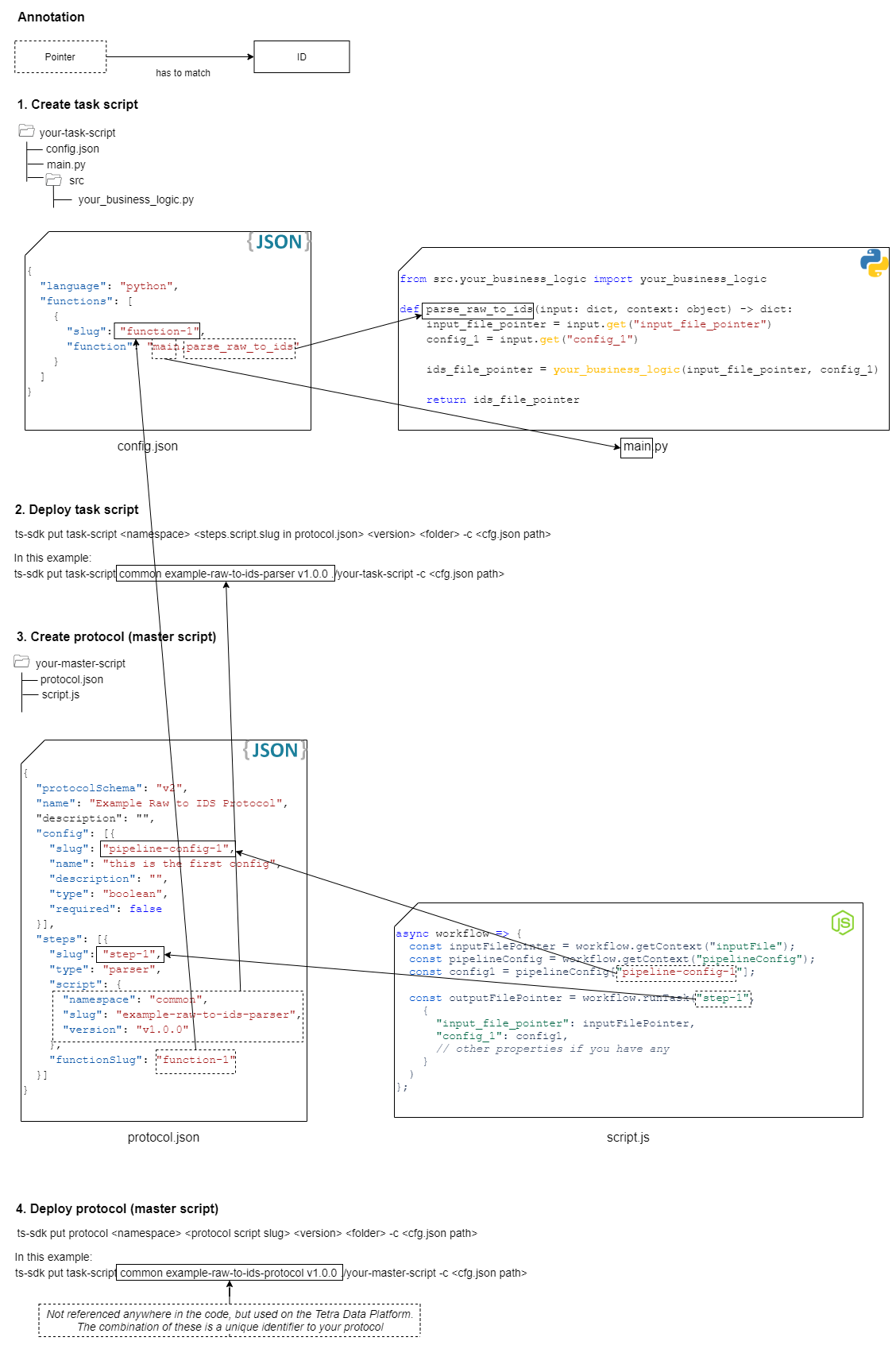Slugs and Self-Service Pipeline Protocols
NOTE:There are several different types of slugs in the Tetra Data Platform. If you are not familiar with Slugs, read the Basic Concepts: Slugs topic to see general information about slugs before reading further.
With protocols that have already been created, slugs are already named and slugs that point to unique identifiers are already referenced properly. So, you don't need to know details about slugs to get started with using creating a pipeline based on already-existing protocols -- everything is already "wired" properly.
But, if you use the TetraScience Software Development Kit (SDK) to create your own self-service pipeline - this means that you'll create your own custom protocol code, so you will need to have a good grasp of how slugs work.
Purpose of a Slug
At the most basic level, a slug can either be a unique identifier or point to another unique identifier. A slug never performs both functions at the same time: it either is a unique identifier or points to a unique identifier.
When you create a pipeline protocol, there are several different types of slugs that you'll use. These serve different purposes.
- Organizational Slug - Organizational slugs are used primarily to indicate the organizational owner of the protocol. This is important because, when combined with a namespace, it indicates who has permission to see and run the protocol. Since with Self-Service Pipeline you are writing your own pipeline protocol for your own organization, you'll want to use your own organization's slug.
- Protocol Slug - Protocol slugs are used primarily to uniquely identify the protocol that you will create.
- Task Slug - Task slugs are used primarily to uniquely identify information related to task scripts, such as the name of the task script.
Slug Naming Conventions
Slugs have a few general naming conventions that you'll want to use:
- Use hyphens to separate words like this: thermo-fisher-RAW-to-IDs.
- Only use letter, number, hyphen, and underscore characters.
Slug Mappings
The values for different types of slugs in your self-service pipeline files and commands must be mapped properly for the protocol to work. Review the following image to learn more about the different mappings.

Updated 4 months ago
